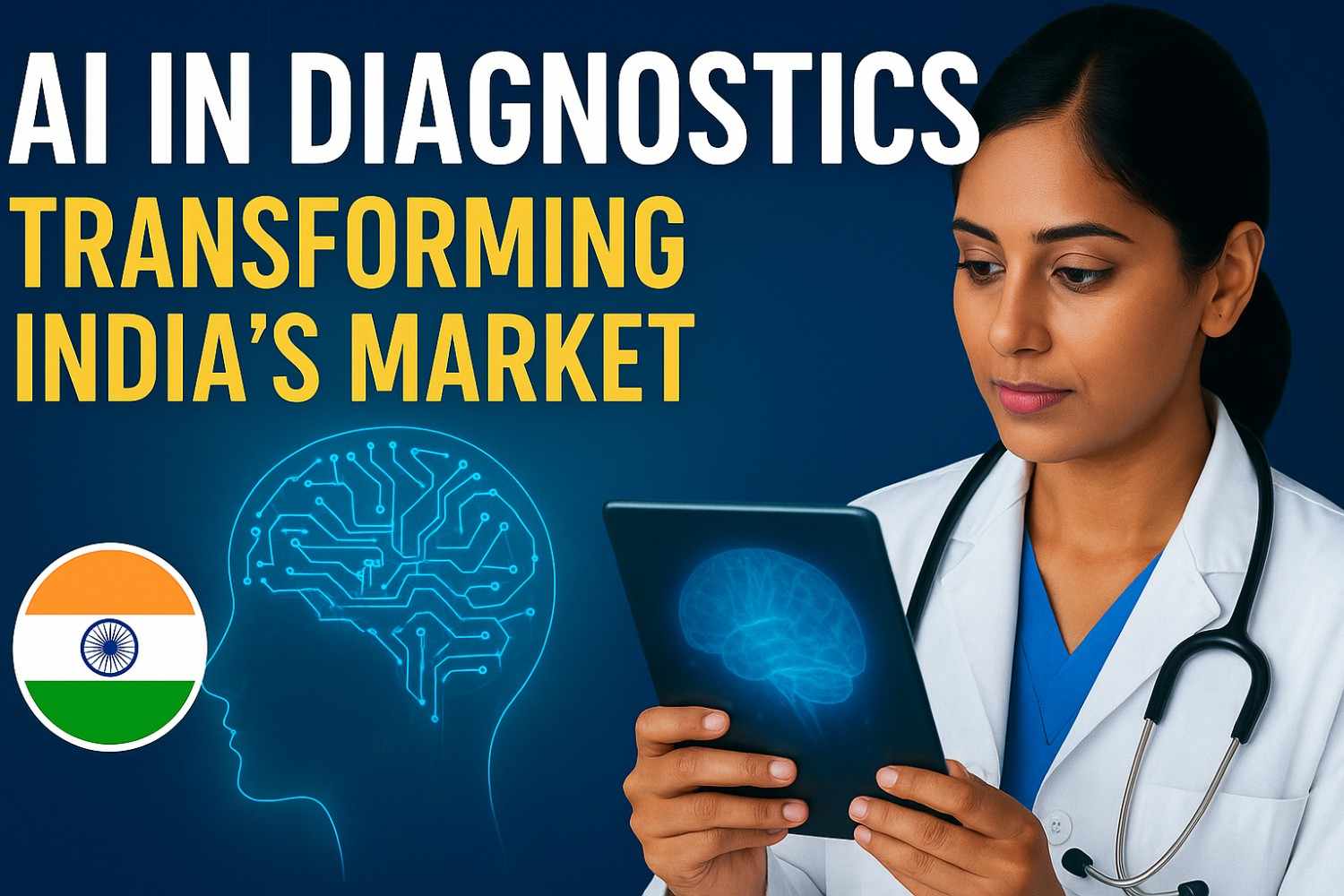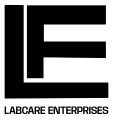
India is quickly becoming one of the most attractive markets for AI-driven diagnostics as artificial intelligence (AI) transforms healthcare globally. AI is enhancing accuracy and accessibility while also speeding up diagnosis in radiology, pathology, and predictive disease modeling.
But this technical advancement also brings with it a new problem: regulation. India is currently actively developing regulations to guarantee the ethical, safe, and responsible development of AI in healthcare.
Let’s examine how legislation and AI are working together to change India’s diagnostics market.
Table of Contents
ToggleThe Quick Development of AI in Diagnostics
In India, the application of AI in medical diagnosis has increased dramatically. The Indian AI-in-diagnostics market was estimated to be worth USD 12.87 million in 2024 and is predicted to grow at a CAGR of around 23% to reach USD 44 million by 2030, according to a 2025 analysis by Research and Markets.
Three main elements are responsible for this tremendous growth:
- Lack of qualified medical personnel, especially in rural and semi-urban areas.
- Increasing use of cloud-based medical imaging and digital healthcare technologies.
- The government and commercial sector are investing more in AI health solutions.
In India today, AI is being used in a number of diagnostic fields:
- Radiology: Automated interpretation of MRIs, CT images, and X-rays to identify anomalies and early indicators of cancer and stroke.
- Pathology: AI systems that analyze biopsy slides, blood smears, and histopathological pictures to accurately identify tumors and infections.
- Ophthalmology: Using AI-enabled cameras to check the retina for diabetic retinopathy.
- Genomics: AI tools for individualized therapy suggestions and gene sequencing.
For example, a recent research project in India trained an AI system on more than 5 million chest X-rays to identify lung problems with remarkable accuracy—a development that can help radiologists and clinicians who are overworked.
The Struggle for Tighter Regulation
Policymakers are increasingly concentrating on making sure that healthcare AI functions within distinct ethical and legal bounds as innovation picks up speed.
Recently, proposed regulations for Software as a Medical Device (SaMD) were produced by the Central Drugs Standard Control Organization (CDSCO). These regulations legally bring medical software based on AI and machine learning into compliance with India’s medical device regulations.
For such AI-powered solutions, the rules outline classification schemes, approval processes, and quality-assurance standards.
Standardization of Diagnostic Laboratories
In order to standardize diagnostic laboratories and sample collecting procedures, the Directorate General of Health Services (DGHS) is concurrently drafting a new set of regulations. These guidelines will guarantee:
- Appropriate certification and training for those who collect samples.
- Cold chain upkeep while samples are being transported.
- Paperwork and labeling that cannot be tampered with to avoid confusion or contamination.
- Routine audits to confirm adherence to hygienic and safety regulations.
Additionally, India recently became a member of the Global HealthAI Regulatory Network (GRN), an organization located in Geneva that assists nations in standardizing AI regulation in healthcare.
India’s commitment to international standards for safety, openness, and the moral application of AI in medicine is demonstrated by this membership.
In 2025, Union Finance Minister Nirmala Sitharaman emphasized that regulations need to “keep pace with the rapid adoption of AI.” The government’s overarching objective is to promote innovation while guaranteeing patient safety, data security, and accountability.
What This Signifies for Suppliers and Diagnostic Labs
The way diagnostic labs and suppliers function in India is changing as a result of the combination of AI integration and stricter regulations.
1. Increased Demand for Standardized Consumables
As laboratories embrace automation and artificial intelligence, they need high-precision consumables, such as contamination-proof collection kits and calibrated test tubes.
To guarantee accurate data for AI systems, each sample must adhere to digital process requirements.
2. Prioritize Quality and Traceability
Due to regulatory monitoring, labs will favor suppliers who offer certified and traceable items.
Batch tracking, cold-chain compliance, and appropriate documentation for consumables will become crucial.
3. Growth of Point-of-Care and Remote Diagnostics
AI is making it possible for diagnostics to go beyond traditional laboratories. Compact, field-ready consumables and sample kits are finding new markets as portable AI-powered blood tests and imaging devices make their way into rural clinics.
4. Possibilities for Local Innovation
India’s drive for Made-in-India diagnostics, such as Huwel Lifesciences’ ICMR-validated TB kits, demonstrates that regional businesses may successfully blend affordability with innovation.
In the upcoming expansion stage, suppliers who support these initiatives will play a crucial role.
Future Difficulties
Although the advancement is thrilling, there are obstacles in the way:
- Ambiguity might cause approvals to be delayed because regulations are always changing.
- Compliance may be expensive or difficult for small diagnostic labs.
- Patient consent and data security continue to be crucial concerns in the use of AI.
- Implementation in smaller healthcare settings may be slowed by skill gaps in using AI tools.
But these difficulties also make it possible for suppliers, labs, and tech companies to collaborate to build a more cohesive and legal ecosystem.
The Path Ahead
The diagnostics sector in India is situated at the nexus of innovation and regulation. Faster, more accurate, and more accessible diagnoses are promised by artificial intelligence, and new rules are intended to make sure that this advancement occurs ethically.
The message is obvious for manufacturers, suppliers, and healthcare entrepreneurs: those who integrate quality, compliance, and technology will win the future.
In this new environment, companies that develop alongside AI-driven healthcare will not just endure but prosper.
One thing is certain as India solidifies its place in the global AI-healthcare scene: the next diagnostic revolution will not only be digital but also ethical, data-driven, and manufactured in India.
Verified Sources
- Research and Markets (AI in Medical Diagnostics Market 2025–2030)
- CDSCO’s proposed Medical Device Software Guidelines
- Livemint: The center intends to renovate the labs with stringent guidelines for sample collecting and transportation
- Financial Express: How AI is improving medical diagnostics and supporting Indian physicians
- Times of India: Nirmala Sitharaman: Regulation needs to keep up with the adoption of AI
- India has joined the HealthAI Global Regulatory Network (NextIAS)
In Conclusion
The way India identifies and treats illnesses is gradually changing due to artificial intelligence. The emphasis is moving toward safer, more transparent, and effective diagnostic systems as stricter government rules take effect.
Although there may be obstacles along the way, India’s dedication to striking a balance between innovation and regulation is laying the groundwork for a more intelligent and dependable healthcare system in the future.
Now is the ideal moment for healthcare companies, suppliers, and diagnostic labs to develop, innovate, and adjust to this AI-driven revolution.



